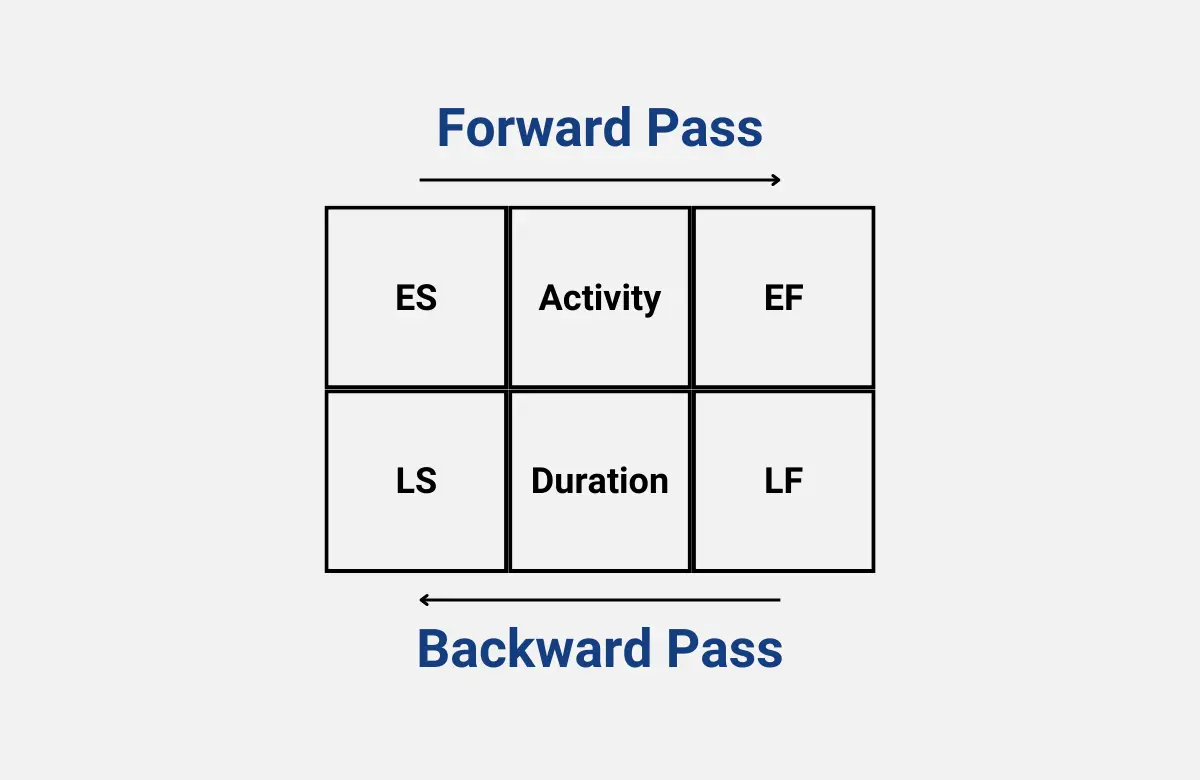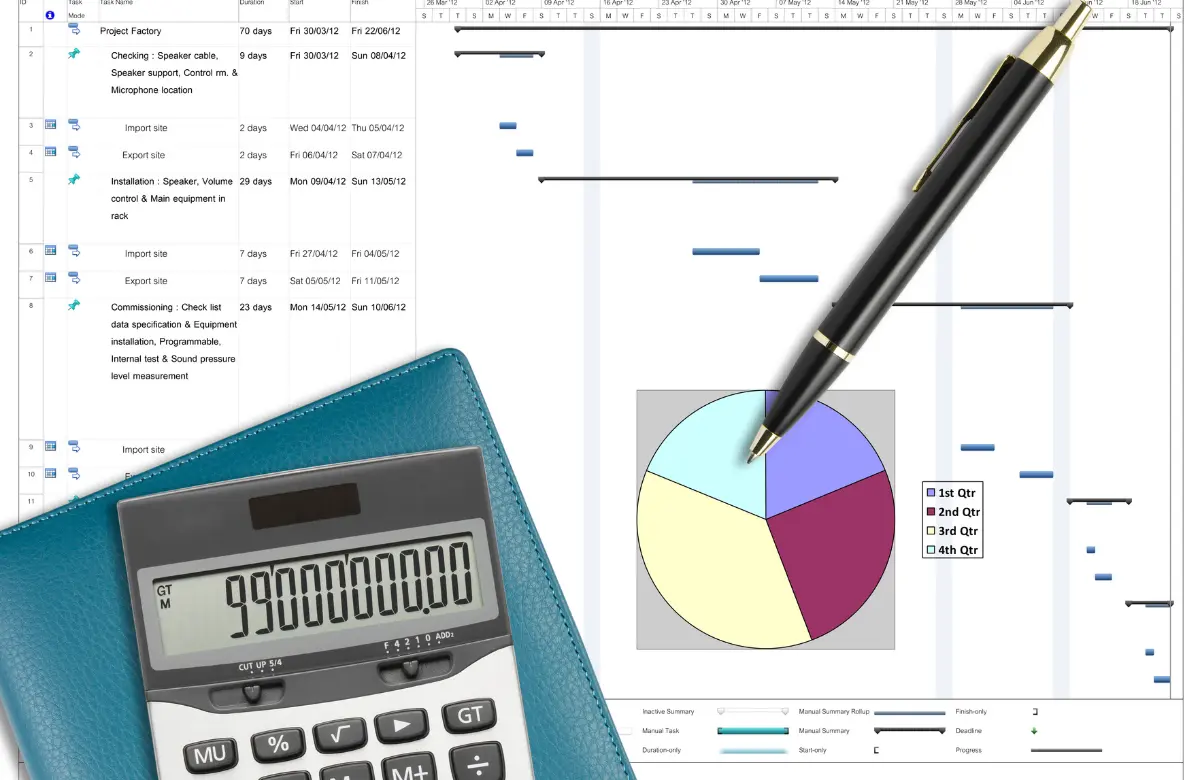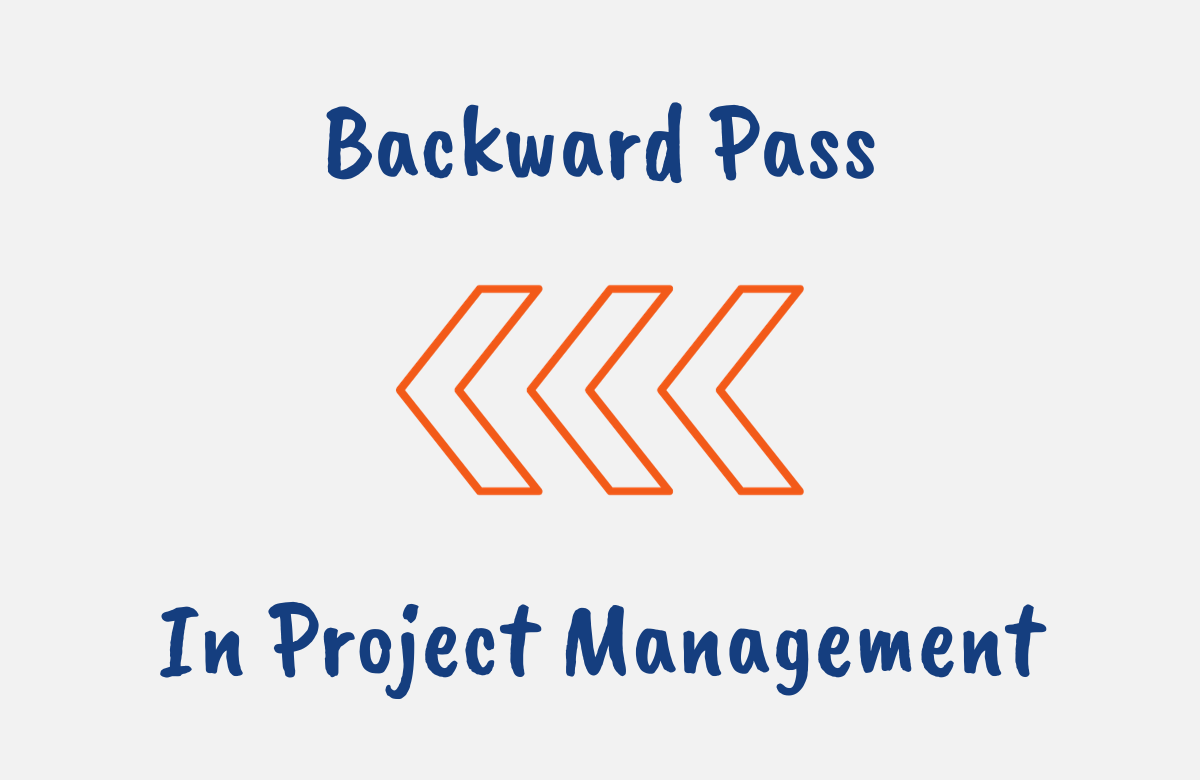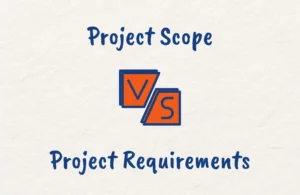Project management is a complex process that requires careful planning and execution to complete projects on time and within budget successfully.
As a project manager, you need effective tools and techniques such as the backward pass technique to develop realistic project schedules.
Understandably, the concepts of project scheduling, critical path analysis, float, and forward and backward pass can be confusing in project management.
In this guide, we will cover what backward pass in project management entails, how to perform a backward pass on a project schedule network to effectively manage your projects, and an example for clarity.
What Is Backward Pass in Project Management?
Backward pass in project management is used to calculate the late start and late finish date for each project activity by working backward from the project end date, to determine the latest completion times for activities in a project schedule.
In a backward pass, you start by entering the project end date as the late finish date for the last activity. Then for each preceding activity, you subtract the activity duration from its successor’s late start date to determine its late finish date.
The late start date is calculated by subtracting the activity duration from its late finish date. This is done iteratively for all activities in the project schedule network diagram until the start date is reached.
Backward pass analysis provides you with the total float available for non-critical activities and helps identify the critical path
It is performed after the forward pass which calculates the early start and early finish dates by working forwards from the start date.
Combining both backward and forward passes gives you greater visibility into schedule flexibility and supports optimal decision-making for project schedules.

Project Schedule Network Analysis
To develop the schedule of a project, you need to have a defined project activity list, estimated activity durations, and a network diagram that depicts the order of how the work will be done.
With these, you can begin schedule network analysis to create the final schedule. This analysis may use one or more of the following techniques:
Critical Path Method
The Critical Path Method is a key technique for developing project schedules. It allows you to identify the critical path.
This is the longest-duration path through a network diagram and determines the shortest time it could take to complete the project.
By calculating the early start, early finish, late start, and late finish dates for each activity using a forward pass and backward pass, you can determine the amount of float or slack time along non-critical paths.
This provides you with greater visibility into the schedule dependencies and flexibility.
Schedule Compression
Schedule compression techniques like crashing and fast tracking are used to shorten the project schedule duration by reducing activity durations along the critical path.
You can crash activities to meet tight deadlines and client demands by assigning more resources to perform them in parallel or fast-track activities by performing them sequentially rather than waiting for predecessors to be completed.
Modeling
Project scheduling models like the Program Evaluation and Review Technique (PERT) use activity duration estimates to calculate schedule parameters.
By modeling the project as a network diagram, you can determine the critical path, resource requirements, and overall project duration.
Statistical modeling accounts for uncertainties in activity duration estimates for more realistic schedules.
Resource Optimization
Optimizing resource utilization is key for efficient project execution. Leveling resources spreads demand evenly over time while smoothing alters activity schedules to resolve overallocations.
Resource-driven scheduling optimizes schedules based on resource availabilities and constraints.
As a project manager, you need to balance between resource optimization and critical path management.
Critical Chain Method
The critical chain method focuses on resource dependencies rather than task dependencies.
It employs buffer management to protect the critical chain from uncertainties.
By prioritizing resources for critical chain activities and monitoring buffer consumption, you can take proactive action to keep projects on track.
How to Calculate Late Start and Late Finish
The late start (LS) is the latest possible date an activity can begin without delaying the project end date.
For the last activity, LS is its early finish date from the forward pass. For other activities, LS is the lowest late finish date of its successor activities.
The late finish (LF) is the latest possible date an activity can be completed without impacting the schedule. It is calculated as:
LF = LS + Activity Duration – 1
For example, if Activity B has a late start of Day 8 and a 3-day duration, its late finish will be Day 8 + 3 – 1 = Day 10.
The late dates define the schedule flexibility and float for activities.
Comparing late dates to early dates reveals the total float available. Activities on the critical path have zero float with ES = LS and EF = LF.
Non-critical activities on the other hand have float equal to (LS – ES) which indicates flexibility in start times without impacting delivery.
Understanding late start and finish enables you to optimize schedules, focus on high-priority critical path activities, and take advantage of float to mitigate risks.
The backward pass complements the forward pass analysis for comprehensive schedule insights.

How to do a Backward Pass in Project Management
Performing a backward pass is a key technique for total float and critical path analysis.
Follow these steps to conduct a backward pass on your project schedule network:
1. Create the Schedule Network Diagram
First, create a project schedule network diagram showing the logical relationships and sequences between activities.
This can be done using project management software or manually using a precedence diagramming method like AON (Activity-on-Node).
Identify all the project activities, durations, and dependencies. The network diagram visually depicts the workflow and serves as the basis for the backward and forward pass analysis.
2. Complete the Forward Pass
Conduct a forward pass on the network diagram to calculate the early start and early finish dates for each activity.
This determines the total project duration since it involves analyzing the schedule from start to finish along the longest path.
3. Enter the Project End Date
Enter the calculated project end date from the forward pass as the late finish date for the last activity without predecessors. This would be the same as its early finish date.
4. Work Backwards Through the Network
Move backwards through the network diagram, activity by activity, to determine the late finish and late start dates.
For each activity:
- Subtract the activity duration from its successor’s late start date to calculate its late finish date.
- Subtract the activity’s duration from its late finish date to get its late start date.
- Where multiple activities merge, use the lowest late start date value.
5. Calculate the Total Float
Once late dates are calculated for all activities, determine the total float as the difference between the late start and early start dates. Activities with zero total float are on the critical path.
6. Review the Critical Path
Analyze the critical path to look for opportunities to compress the schedule. Focus on optimizing activities with the least float first.
By performing a backward pass on your project schedule, you gain greater visibility into activity slack times and dependencies that affect the timeline.
This data supports to optimize scheduling and resource decisions for successful project execution.

Backward Pass Project Management Example
Let’s look at an example to understand how to perform a backward pass to determine the critical path and float in a project schedule network diagram.
Project Overview
A project has 11 activities (A to K) with the following durations and dependencies:
- A – 5 days
- B – 3 days (after A)
- C – 2 days (after A)
- D – 5 days (after B, C)
- E – 4 days (after B)
- F – 1 day (after B)
- G – 3 days (after D, E)
- H – 4 days (after D)
- I – 1 day (after F, G)
- J – 5 days (after G, H)
- K – 2 days (after J)
The project total duration is 22 days as calculated by the forward pass analysis.
Backward Pass Steps
Let’s perform the backward pass on this project schedule:
1. The late finish date for the last activity K is entered as its early finish date of 22 days.
2. Moving backwards, the late start date for K = Late finish (22) – Duration (2) = 20 days
3. The late finish for predecessor J = Late start of K (20) – 1 = 19 days
4. The late start for J = Late finish (19) – Duration (5) = 14 days
5. Follow the same process to calculate late dates for all predecessors till the start of activity A:
- I late finish = 13 days, late start = 12 days
- G late finish = 11 days, late start = 8 days
- H late finish = 10 days, late start = 6 days
- E late finish = 9 days, late start = 5 days
- F late finish = 8 days, late start = 7 days
- D late finish = 7 days, late start = 2 days
- C late finish = 5 days, late start = 3 days
- B late finish = 4 days, late start = 1 day
- A late finish = 0 days, late start = 0 days
Determine total float as late start – early start for each activity.
The critical path is A-B-D-G-J-K with zero total float.
This backward pass analysis provides you with greater insights into the schedule flexibility and dependencies.
You can optimize resources and activities as needed to compress the schedule based on the float values.
Conclusion
The backward pass is a valuable technique for optimizing project schedules and determining the critical path.
By working backward from the project end date, you can calculate late start and finish dates to determine the total float for activities. This provides greater visibility into the schedule flexibility and dependencies.
Combining the backward and forward pass gives you a comprehensive view of the drivers of your project timeline enabling you to identify activities that have room for schedule compression and those that need to be monitored closely to avoid delays.
This supports data-driven decision-making on resource allocation and schedule optimization.





